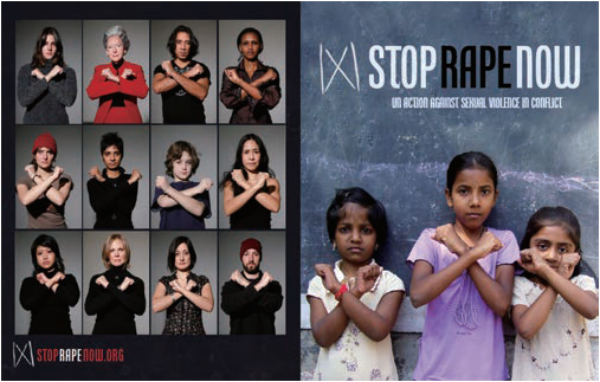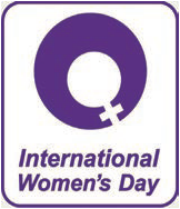Since the early 20th century, countries such as the United States (US), Austria, Denmark, Germany, and Switzerland have been working to improve the status of women who have not had the opportunity to protect their rights for a long time in history. To commemorate these efforts and protect the rights of women further, the United Nations (UN) officially designated March 8th as International Women’s Day in 1975. To mark International Women’s Day on March 8th, the Sungkyun Times (SKT) now looks at the wartime sexual violence that has deprived women of their rights the most.
What is Wartime Sexual Violence?
Definition of Wartime Sexual Violence
Wartime sexual violence refers to any type of sexual violence committed towards the weak during armed conflicts, regardless of gender. It has accompanied most of wars in some form throughout history. According to the ancient writings of authors such as Homer, Herodotus, and Livy, even the ancient Greek and Roman armies committed sexual violence during wars. Evidence shows that sexual violence was used as one of the tools in many wars from the Middle Ages right up until World WarⅡ. Out of all eras, World WarⅡ has had the most evident records of wartime sexual violence. This, however, does not mean that wartime sexual violence ended after World WarⅡ. It was also committed throughout wars such as the Korean War and the Vietnam War, and is still ongoing even today. According to the figures of the UN, there were at least 7,000 women kept as sex slaves of Islamic State of Iraq and the Levant (ISIL) in 2014.
Types of Wartime Sexual Violence
Out of all of the various types of wartime sexual violence, the most common forms that are committed during war are rape and sexual slavery. In a broad definition, wartime rape refers to all forms of rape committed against powerless people. According to the United States Institute of Peace (USIP), an American institute that promotes national security and global stability by reducing violent conflicts, wartime rape refers to rape committed by armed soldiers during armed conflicts. A special report on wartime sexual violence by USIP reported that armed actors are more likely to commit high levels of sexual violence than rebel groups. Sexual slavery is to take ownership over other people and to force them to be engaged in sexual activities. It includes forced prostitution, child prostitution, forced marriage and bride kidnapping. Out of all the sexual slavery that happened during World WarⅡ, the most representative are the Japanese “Ianfu”, or “comfort women”, and the German military brothels.
Victims of Wartime Sexual Violence
By Japan during World WarⅡ
1. What Were the Japanese “Ianfu”?
During World WarⅡ, specically in 1931 when the Pacic War started, the Japanese military forcibly took women, mainly from its colonies, and created brothels called “comfort stations”, forcing those women to be their sex slaves so as to win the war. All of the women who were forced by Japan are called the Japanese “Ianfu”. When this started to be spotlighted by society, Japanese Ianfu became referred to as “comfort women,” women that comforted Japanese soldiers during the war. This is why the term “comfort women” is more commonly known instead of military sex slavery. In a report submitted to the UN in 1996, Japanese Ianfu was referred to as military sexual slavery during wartime considering its purpose, process, as well as its violence. According to a report by the Reward Section of the War Ministry in 1942, the total number of comfort stations was around 400, but it was reported later by the Asian Women’s Fund (AWF) that there were more than 400. Aside from the comfort stations mentioned in the report, there were 125 in China, at least 120 in South East Asia, 20 in the South Seas, and at least 130 comfort stations in Okinawa. At the beginning of the war, women that were forced to live in the ‘comfort stations’ were mostly from Korea and Taiwan. As the frontline expanded, however, women from Burma (Myanmar), China, Indonesia, Philippines, Thailand, and Vietnam were brought to the comfort stations. Since Indonesia was colonized by the Netherlands before Japan, Dutch women who were living in Indonesia were also brought to the comfort stations as well.
2. Victims of Japanese ‘Ianfu’
The exact number of victims is hard to measure due to the absence of systematic data on Japanese ‘Ianfu’. The estimated numbers of victims reported by different scholars based on evidence and testimonies vary from at least 30,000 to 400,000. According to Yoshimi Yoshiaki, a long-time researcher on Japanese Ianfu, there were at least 80,000 to 200,000 victims, and more than half of those were Korean. According to the United Nations Economic and Social Council (ECOSOC), only 25% of the victims were able to survive the daily abuse at the comfort stations. Out of those survivors, 238 victims were found to live in the Republic of Korea; however, only 31 of them are currently alive. That is, the number of victims has rapidly decreased in recent years.
By Germany During the World WarⅡ
1. What Was the German Military Brothel?
Nazi Germany created military brothels during World War II as well, for the use of the soldiers in Wehrmacht and Schutzstaffel (SS), a paramilitary unit led by Adolf Hitler during Nazi Germany. This was an idea developed by the SS chief Heinrich Himmler, who believed that it would increase productivity and prevent homosexuality among soldiers. Most of the women who were brought to the brothels were from concentration camps, mainly from Ravensbrück and Auschwitz. Women in the brothels were regularly tested for sexually transmitted diseases and were forced to abort when they got pregnant. According to Nanda Herbermann, a German writer, there were at least 34,140 European women who were forced to serve as prostitutes in the brothels. Women who were brought to the brothels had to go to the camp hospital, where they were given injections, baths, and better food to make sure they were all healthy and in good condition, both externally and internally. According to some testimonies, there were some soldiers who wanted accompaniment, simply a friend to talk with, instead of prostitutes. Unlike the Japanese Ianfu, most of the victims were able to survive after they were released; most of them remained silent about what happened in the brothels for the rest of their lives. As a result, the story of the victims of the German military brothels is not as commonly known as the Japanese Ianfu due to the lack of testimonies.
2. The Story Behind Screaming Silence
Screaming Silence is a documentary film aired in 2015, based on the testimonies of Jewish men and women who were sexually abused in their childhood, regardless of their gender, during the Holocaust. According to Gideon Grief, an Israeli historian, Holocaust scholars tend not to discuss the subject of sexual violence committed towards children. It took six years for Ronnie Sarnat, the director of the film, to produce Screaming Silence since she had to find the survivors; once she did, the survivors had to decide whether to reveal the secrets that they had kept inside for a very long time. Unlike most documentary films, Screaming Silence uses first-person testimonies only; the survivors wrote their own script, which means they determined what they were going to say on camera themselves. Throughout the documentary, the victims describe their memories of being sexually abused, raped (or gang-raped), or of witnessing prostitution at a young age. The film shows how the memory of the victims affected the rest of their lives as well. For instance, one man told a story of how he struggled his whole life with his sexual identity after being raped by a German soldier, and one woman told about her hardship of not being able to have a sexual relationship with anyone due to the abuse she suffered. Despite all these testimonies, according to Greif, it is hard to understand how extensive this phenomenon was as there is no systematic approach to the subject. Sarnat believes that there would be a way to find out more about sexual violence during the Holocaust if further research goes on.
Efforts Made for Victims of Wartime Sexual Violence
Memorials to the Japanese Ianfu
There have been various memorials and campaigns for victims of the Japanese Ianfu in Korea for decades. One of the most renowned campaigns are the Wednesday Demonstrations which was first held on January 8th, 1992 for the first time. Wednesday Demonstration is a weekly protest that takes place in front of the Japanese Embassy in Seoul every Wednesday at noon. According to the Korean Council for the Women Drafted for Military Sexual Slavery by Japan, there are seven objectives of this Wednesday demonstration: understanding the war crimes, revealing the entire truth of the war crimes, requesting an official apology, making legal reparations, punishing those who are responsible for the war crimes, making accurate records of the crimes in history textbooks, and erecting a memorial for the victims and establishing a historical museum. In Indonesia, a photo exhibition Jugun Ianfu – Comfort Women was held in 2010 for the victims of the Japanese Ianfu by Dutch journalist Hilde Janssen and photographer Jan Banning. They both traveled around Indonesia to encourage the victims of Japanese Ianfu to speak out their stories. As a result, they were able to hold a photo exhibition and publish two books: Shame and Innocence: The Suppressed War Chronicles of Indonesia’s Comfort Women and Comfort Women, a book of the photographs.
Efforts to Eradicate Wartime Sexual Violence

Currently, there is a global drive to eradicate sexual violence that has been accompanying wars. One of the most recent efforts is a global collaboration called the International Campaign to Stop Rape & Gender Violence in Conflict, which is the world’s first global collaboration between Nobel Peace Laureates and other international organizations. The campaign was formed to demand the prevention of rape in conflict, protection of civilians and rape survivors, and a call for justice to all. The three pillars of Prevent, Protect, and Prosecute act as a comprehensive message to stop rape in conflict. Currently, the campaign is focusing on four target countries that are in need of immediate attention: Democratic Republic of Congo, Kenya, Myanmar, and Colombia. The United Nations Action Against Sexual Violence in Conflict (UN Action) was launched in 2007 to support national efforts to prevent sexual violence and respond to the needs of the survivors. There are three pillars of UN Action: Country-Level Action, Advocacy for Action, and Knowledge-Building. Country-Level Action includes the analysis of sexual violence, as well as building systems to monitor and improve the needs of survivors. Advocacy for Action is done by raising public awareness through campaigns such as Stop Rape Now, and Secretary-General’s Unite to End Violence Against Women. To join the Stop Rape Now campaign, people can simply add a picture of a crossed arm to show that they are against sexual violence during conflicts. At last, Knowledge-Building is gained through a research on how to enhance the provision of services and improve protection and prevention.
International Women’s Day
International Women’s Day has been held with different themes every year since 1996. The theme of this year is “Time is Now: Rural and Urban Activists Transforming Women’s Lives.” The struggle for an equal future is now happening around the world in the form of global campaigns, through social media and the use of hashtags such as #MeToo, #YoTambien, #QuellaVoltaChe, #BalanceTonPorc, and #Ana_kaman.

Wartime sexual violence has terrified the powerless, especially women, for a very long time. Now it is time to eradicate wartime sexual violence from all types of armed conflicts.
